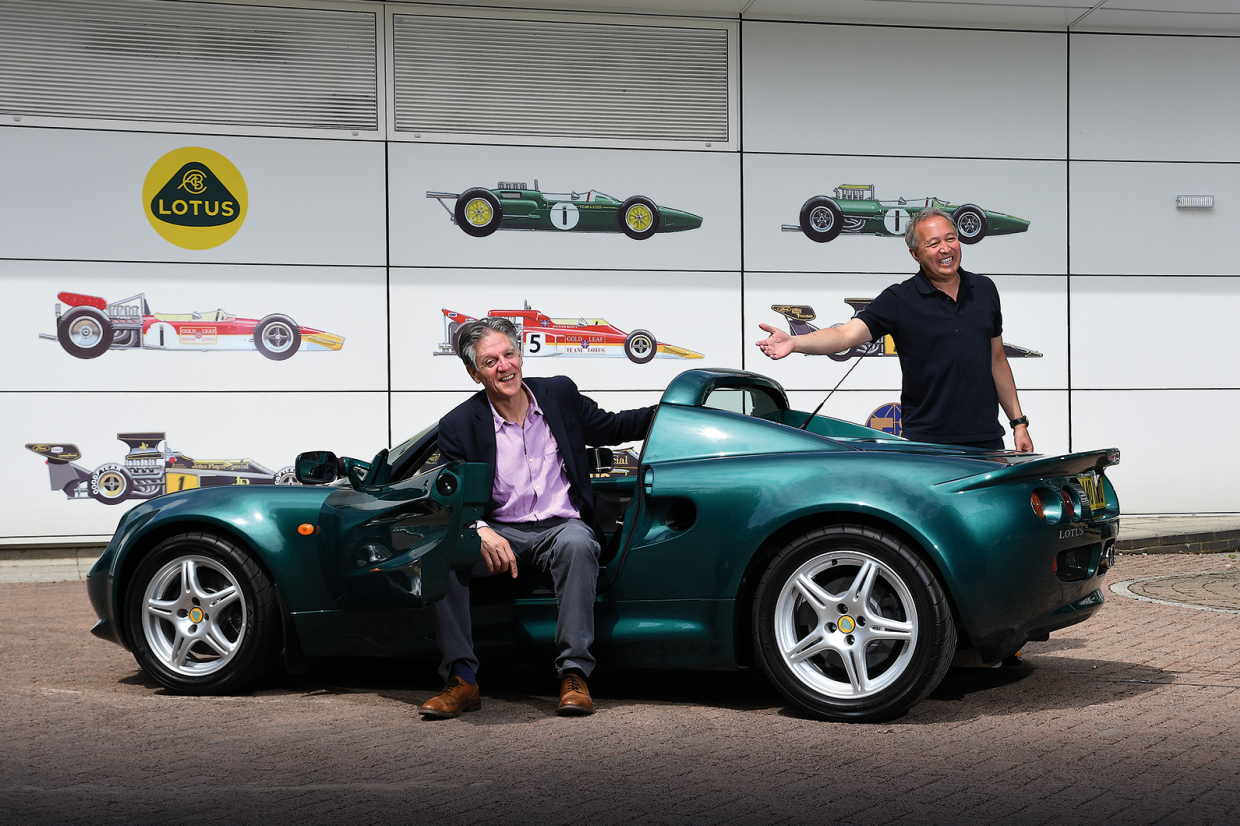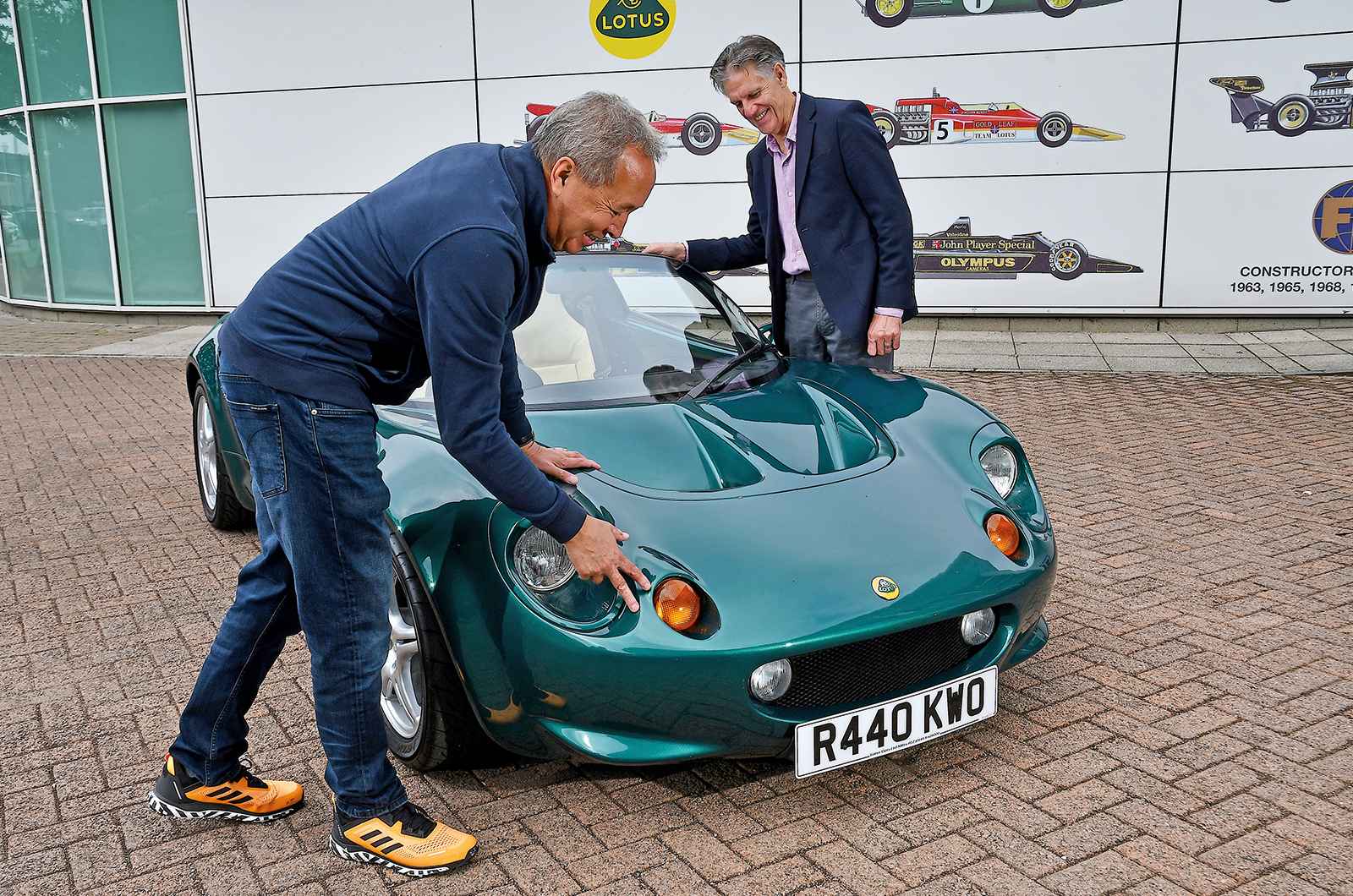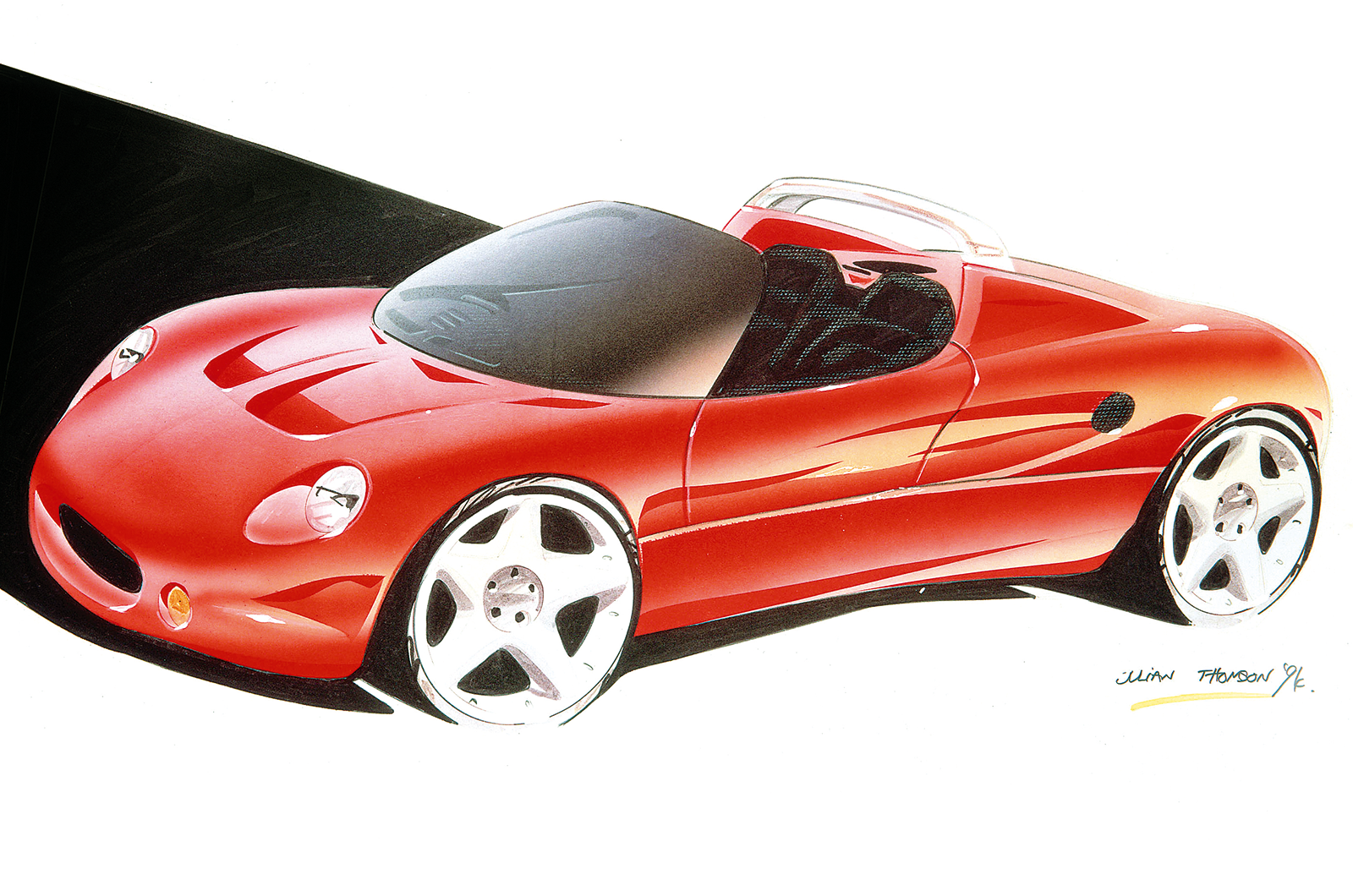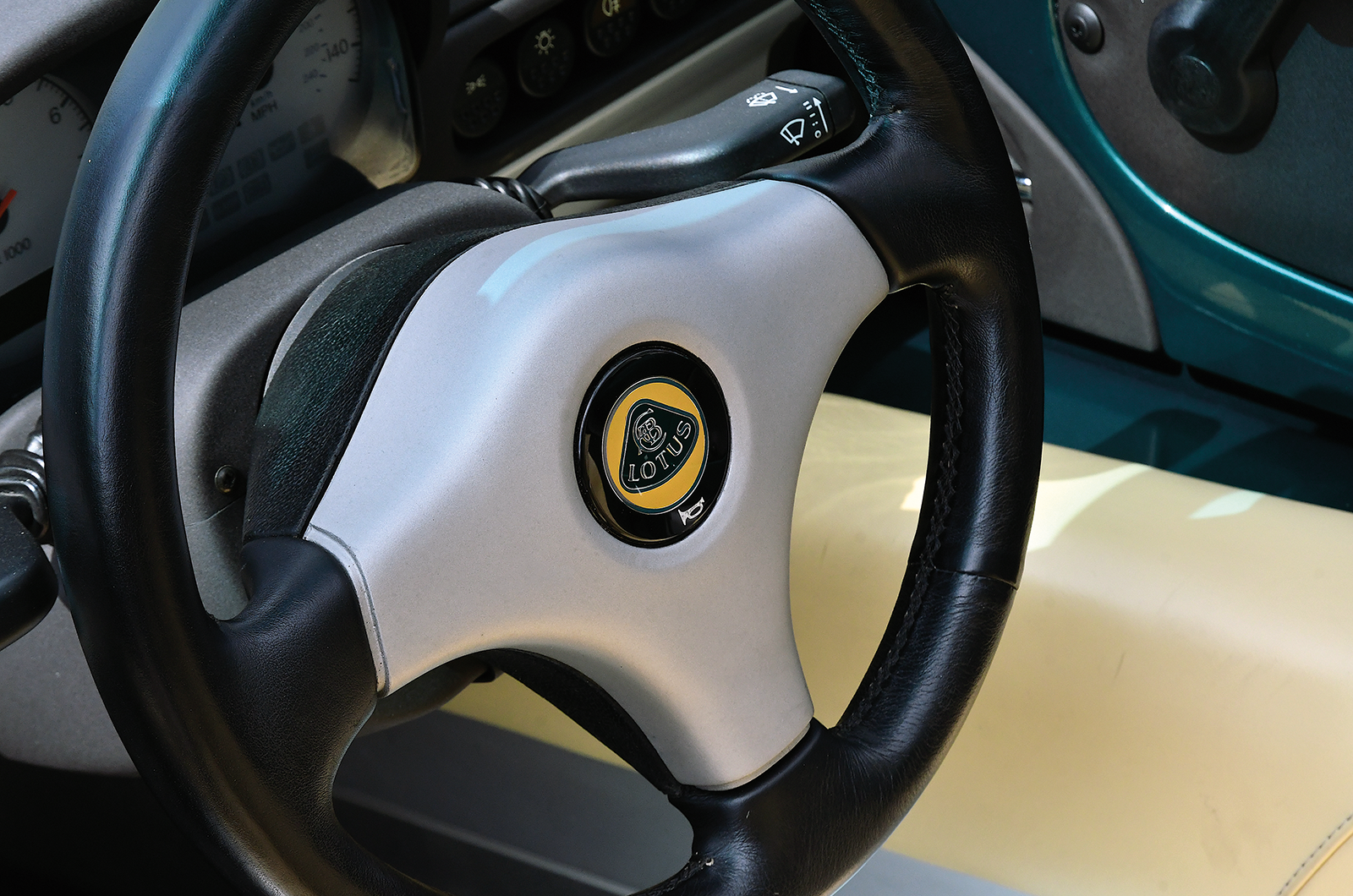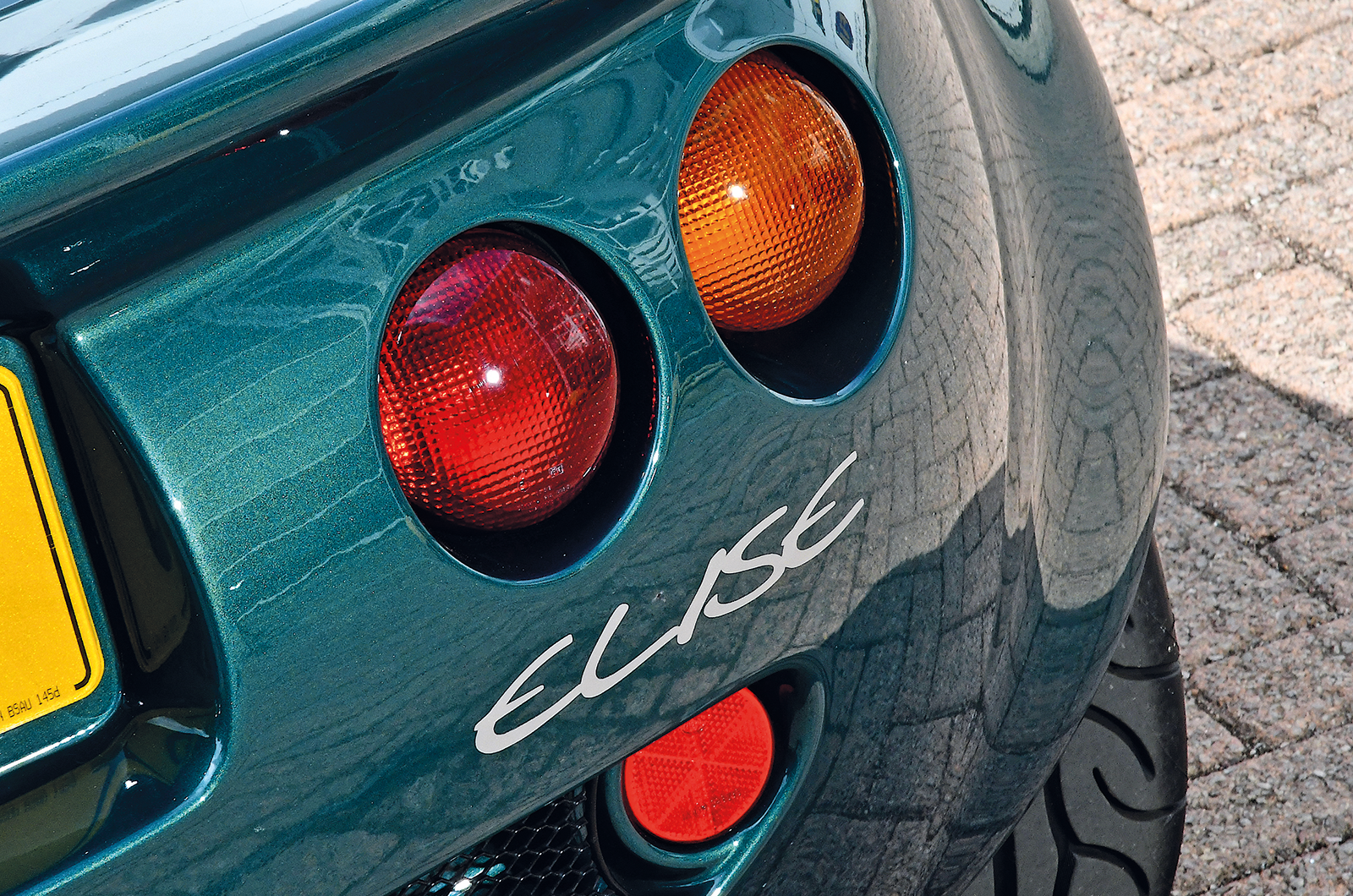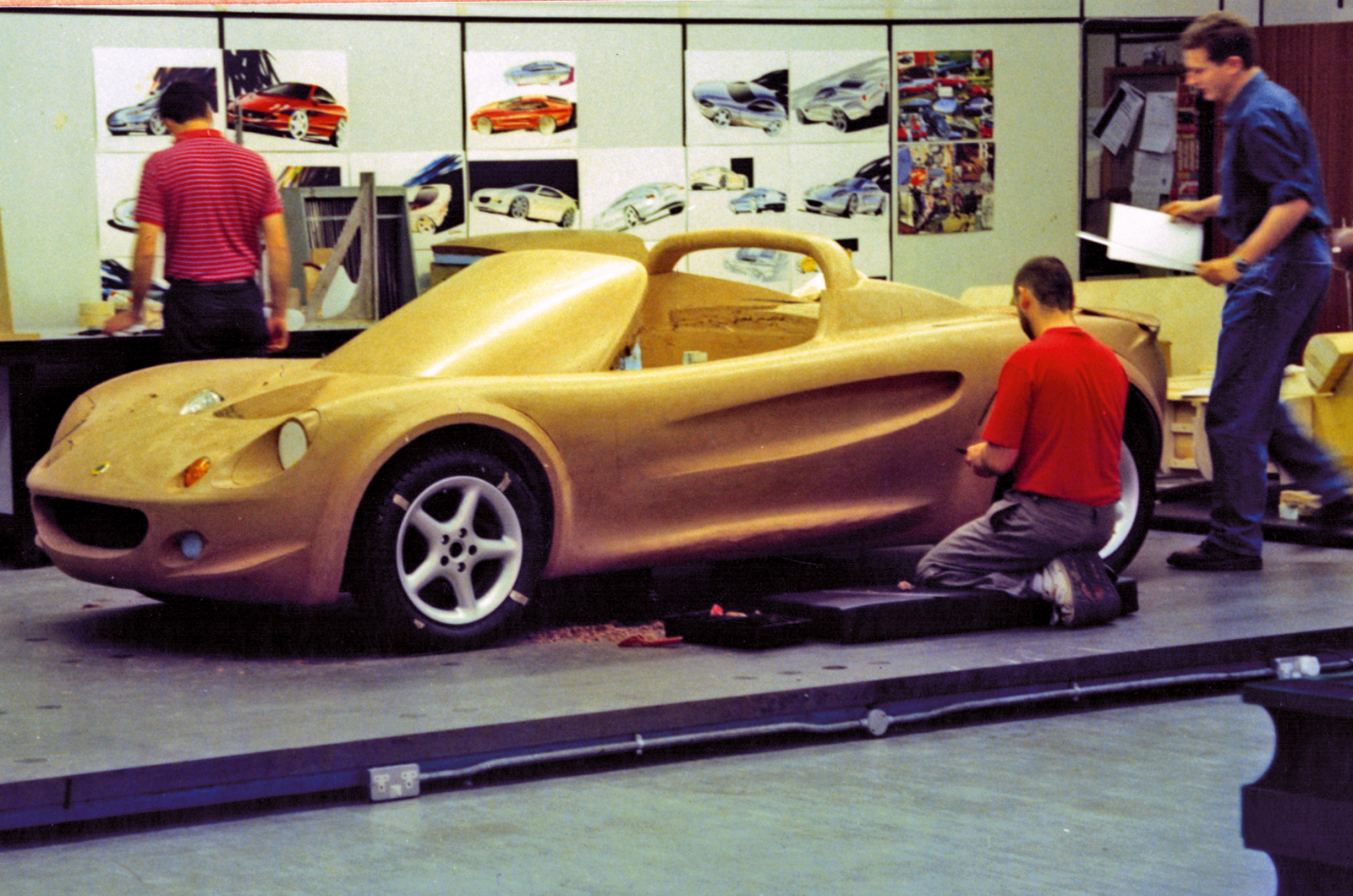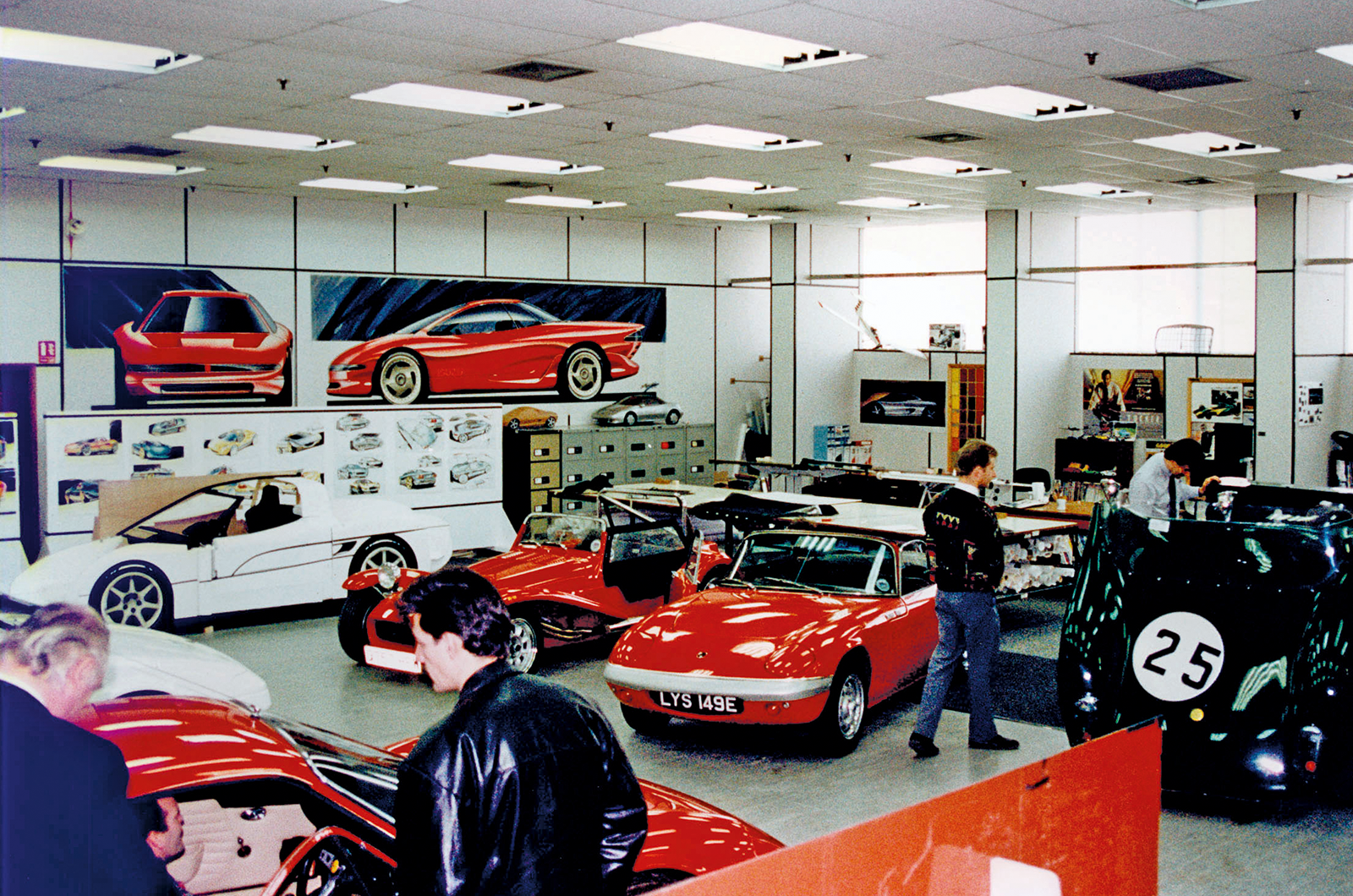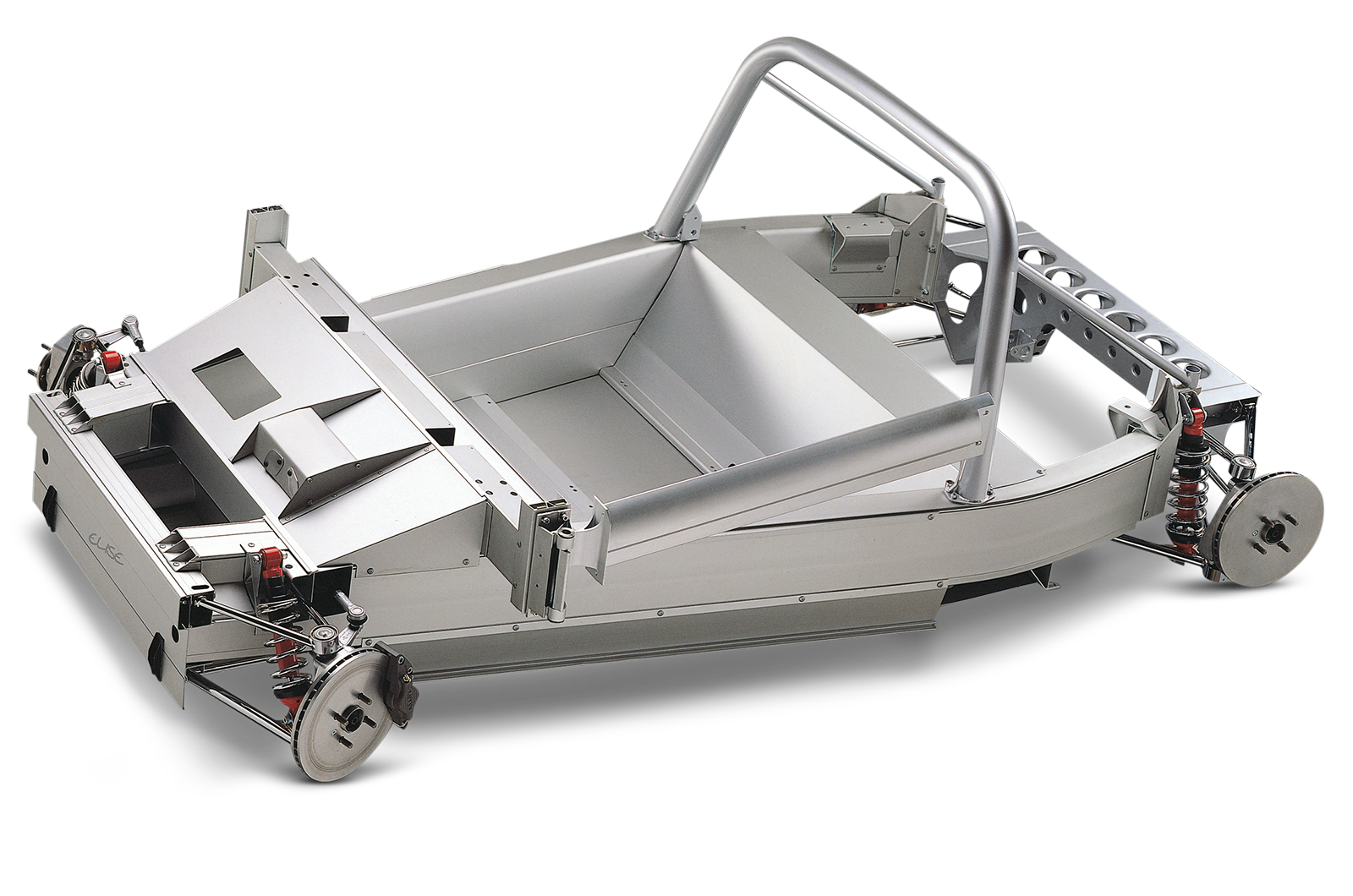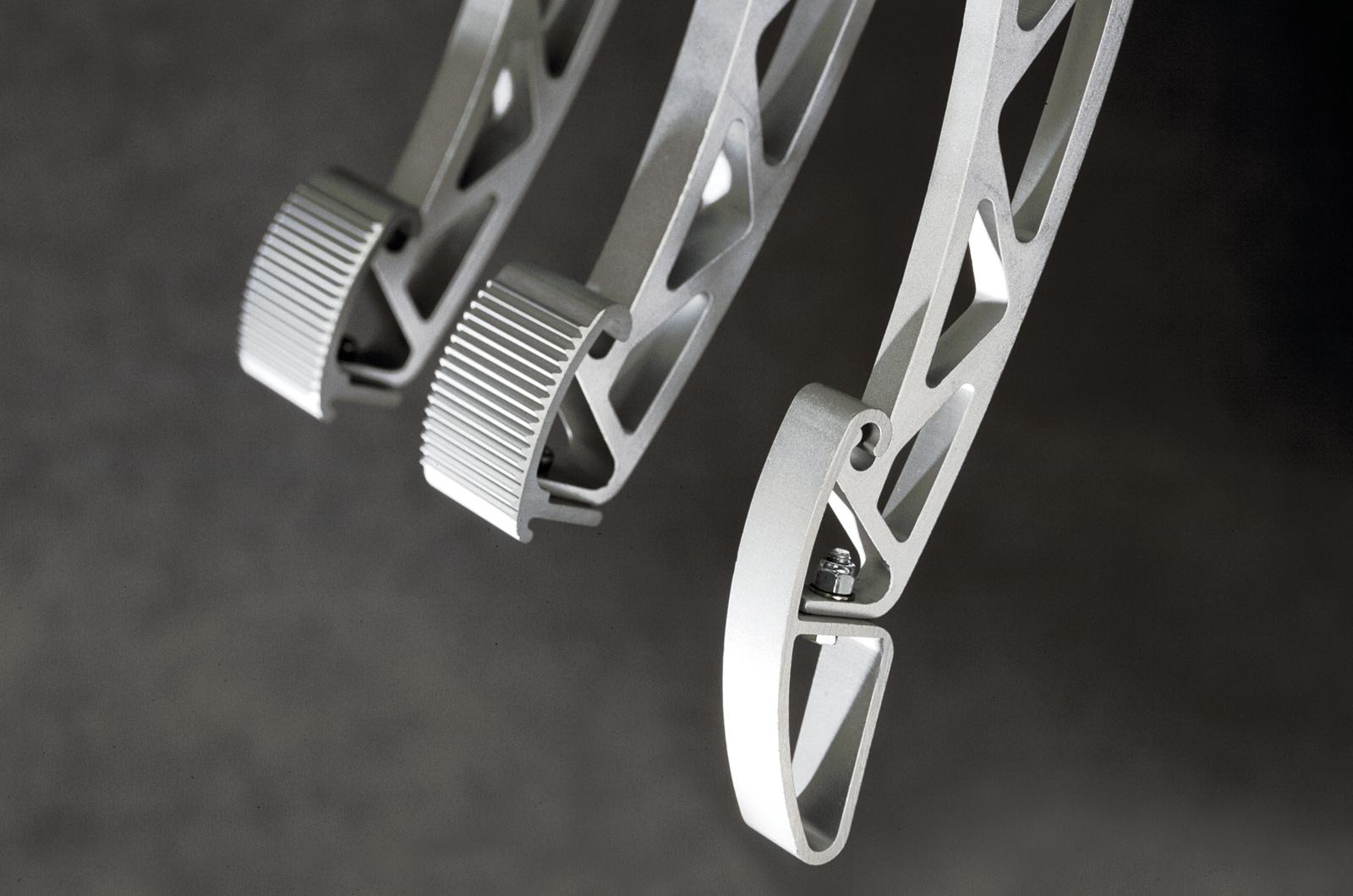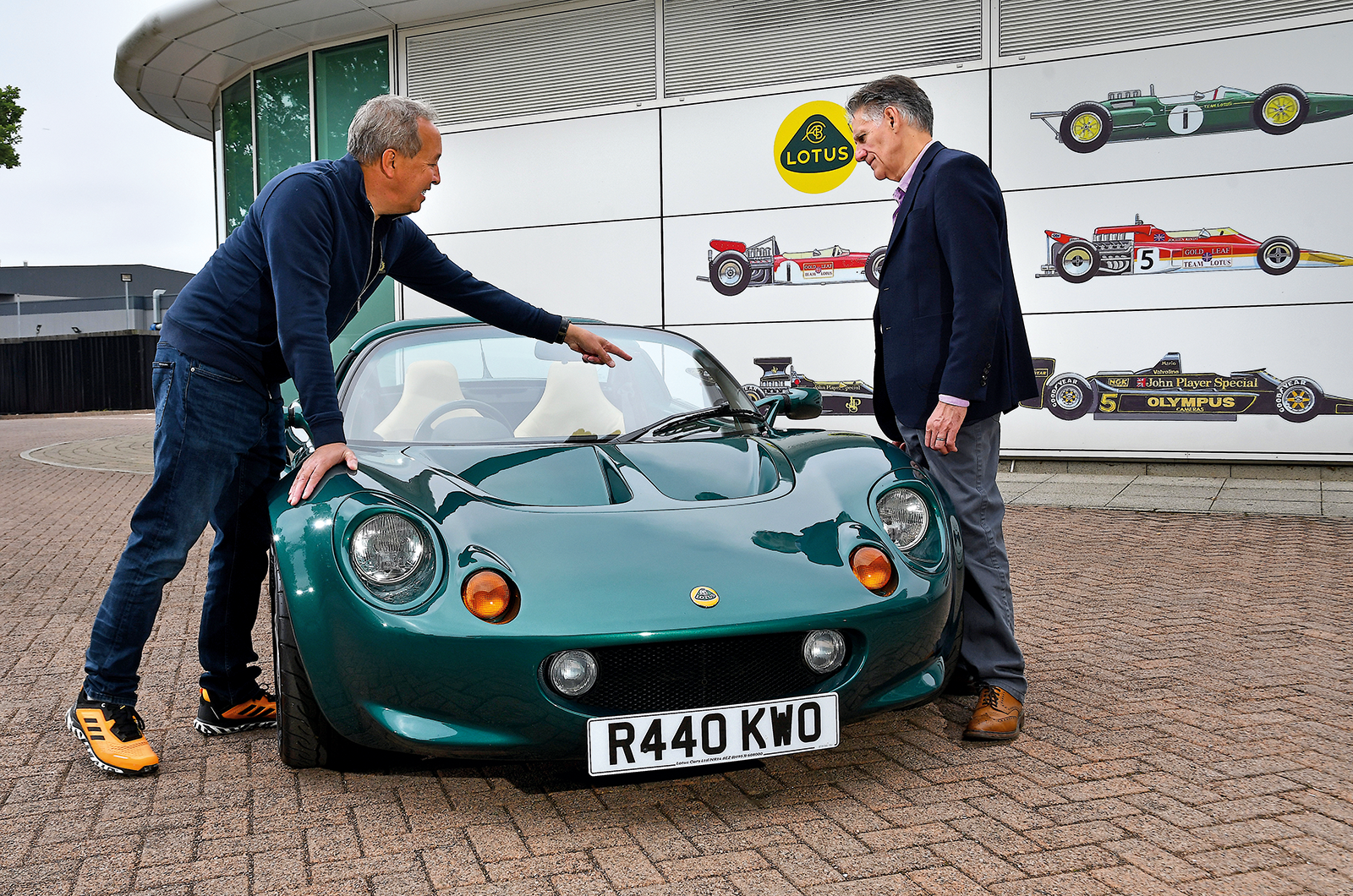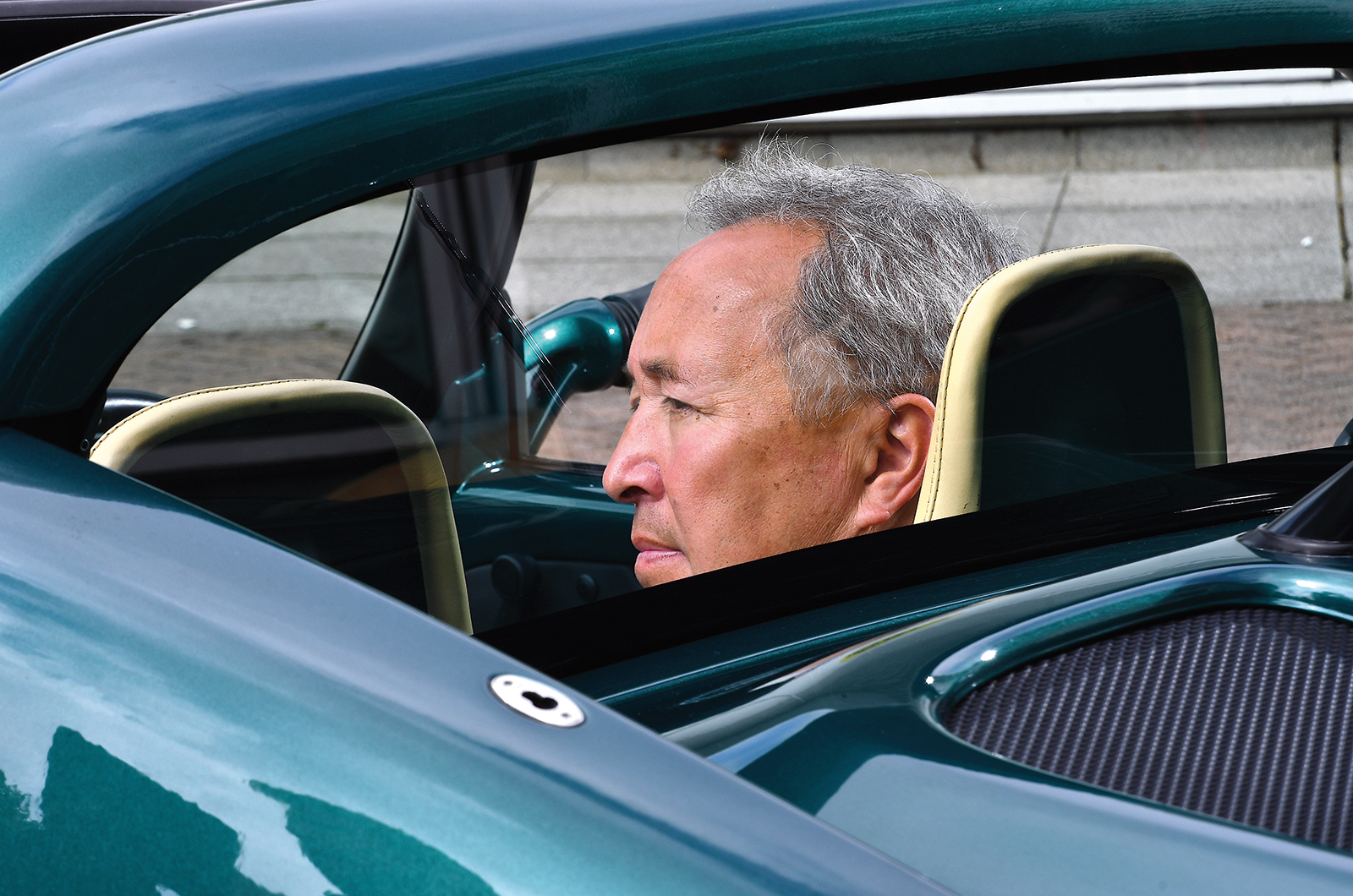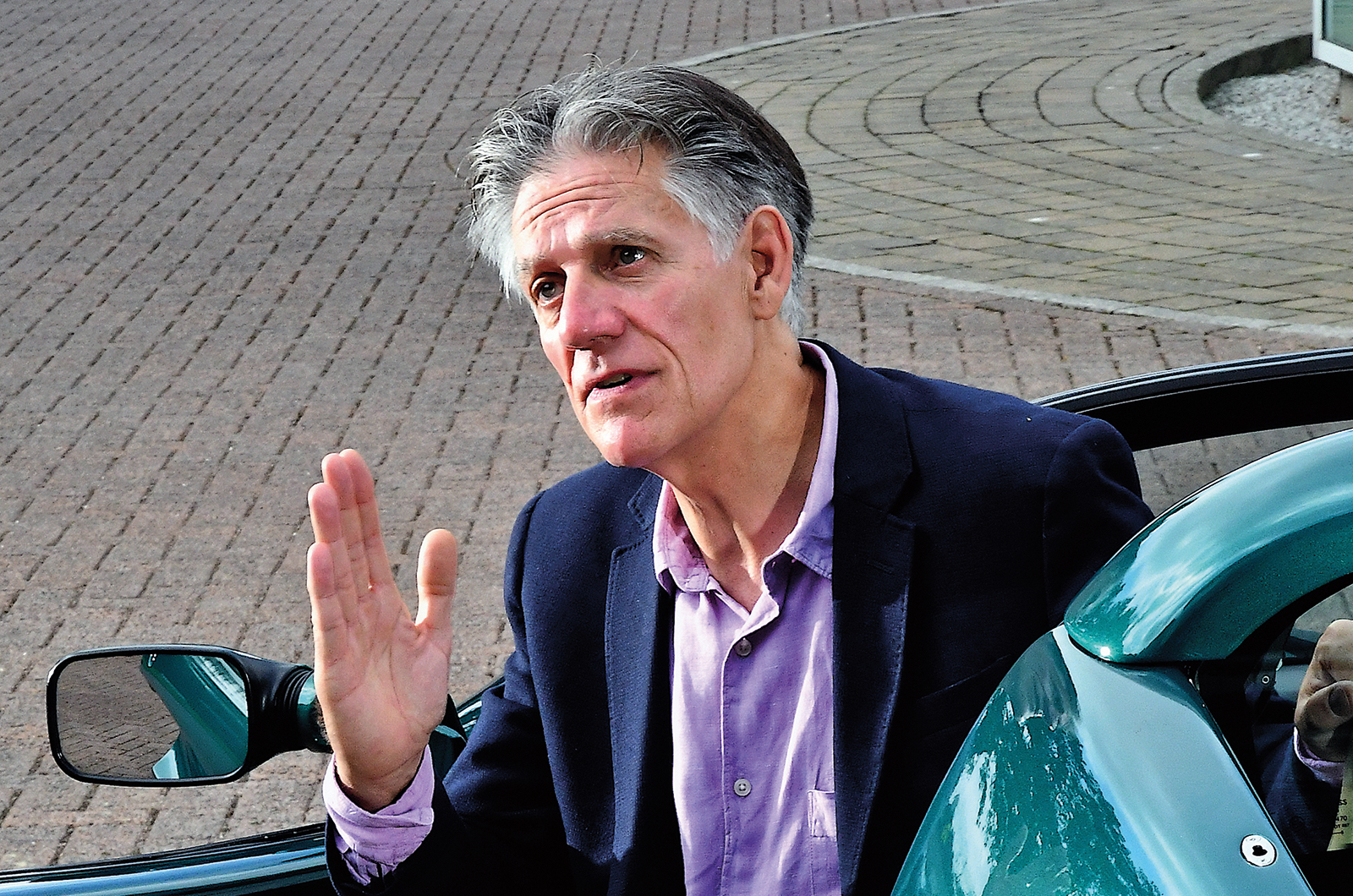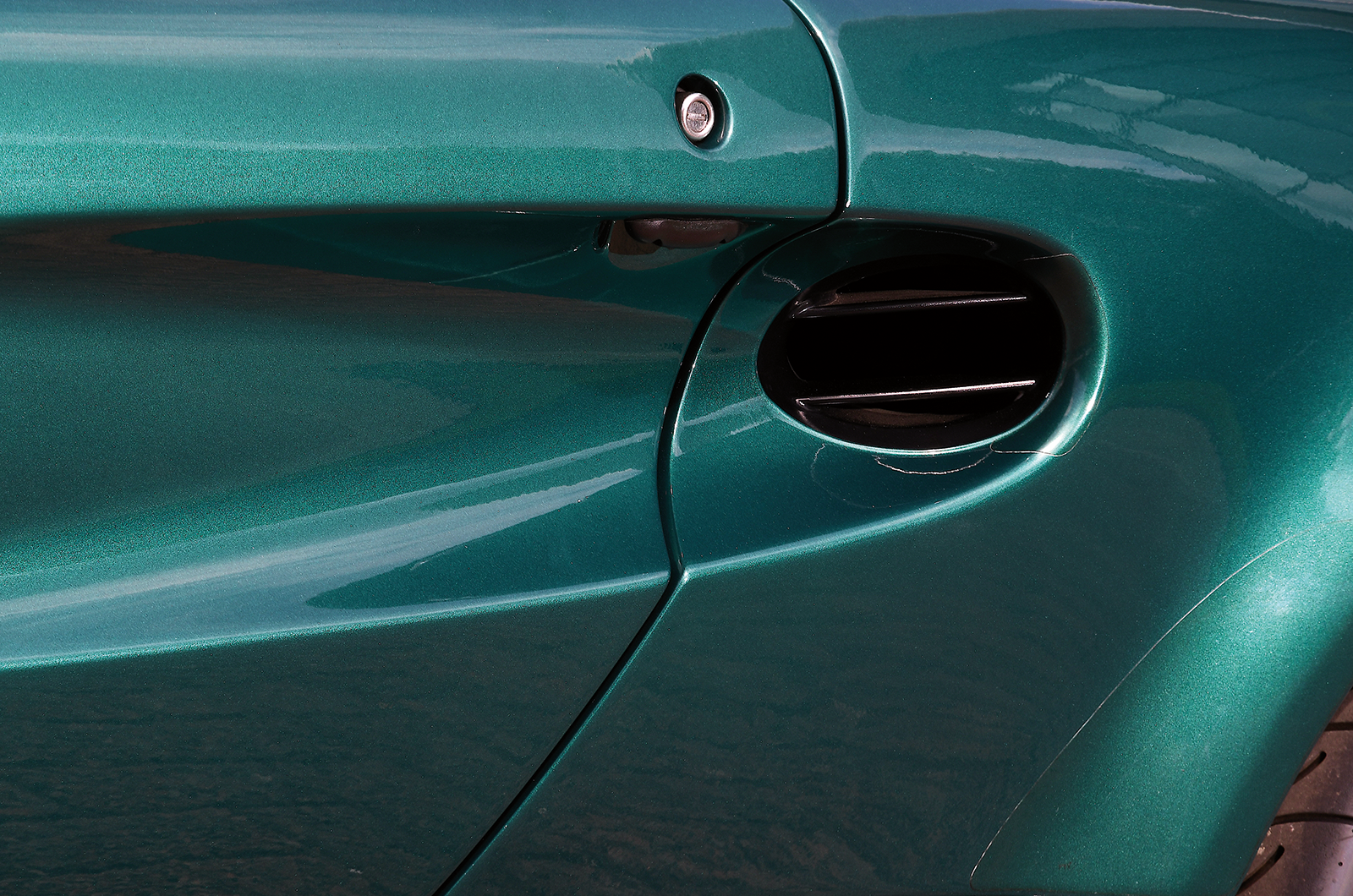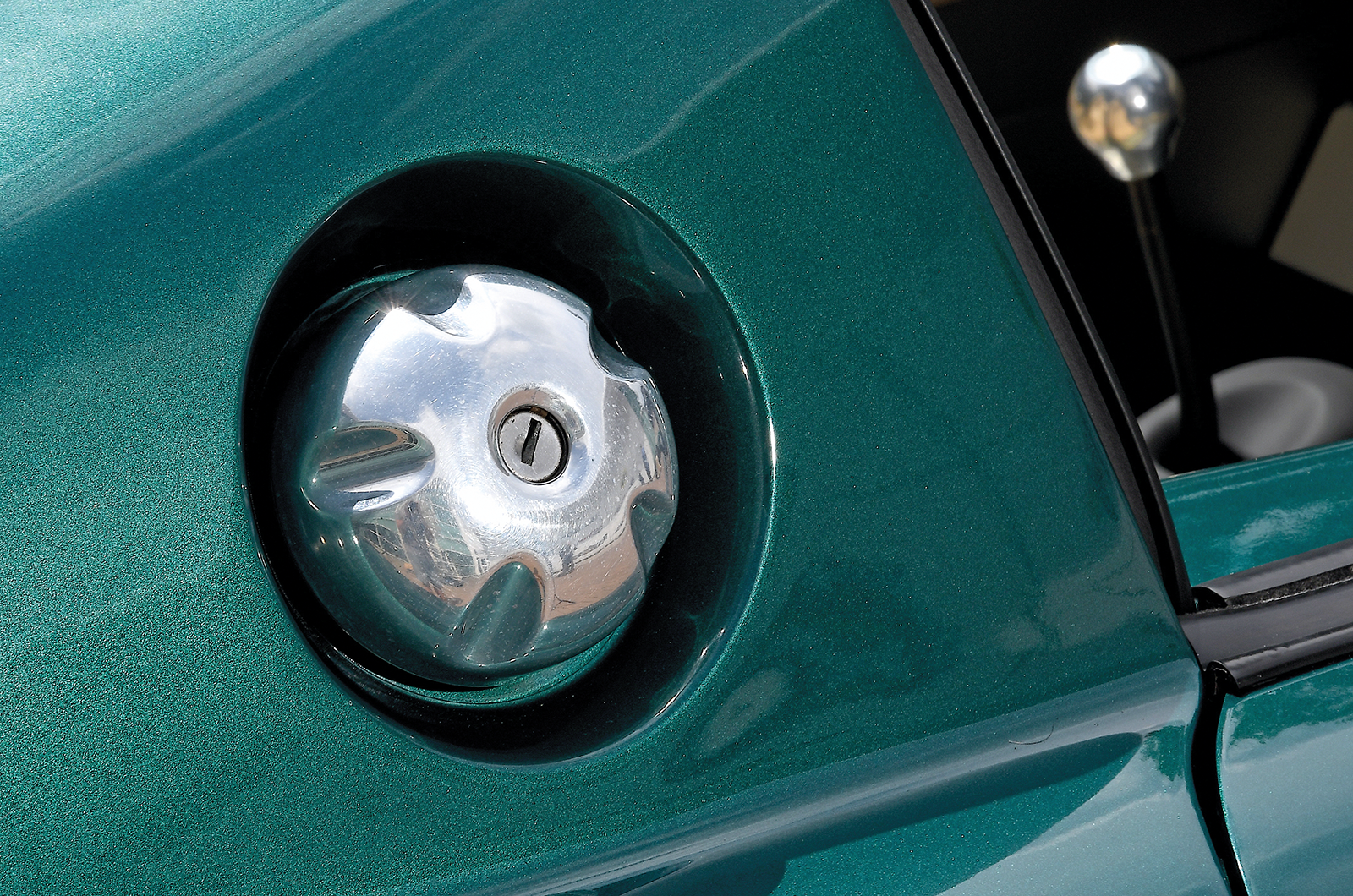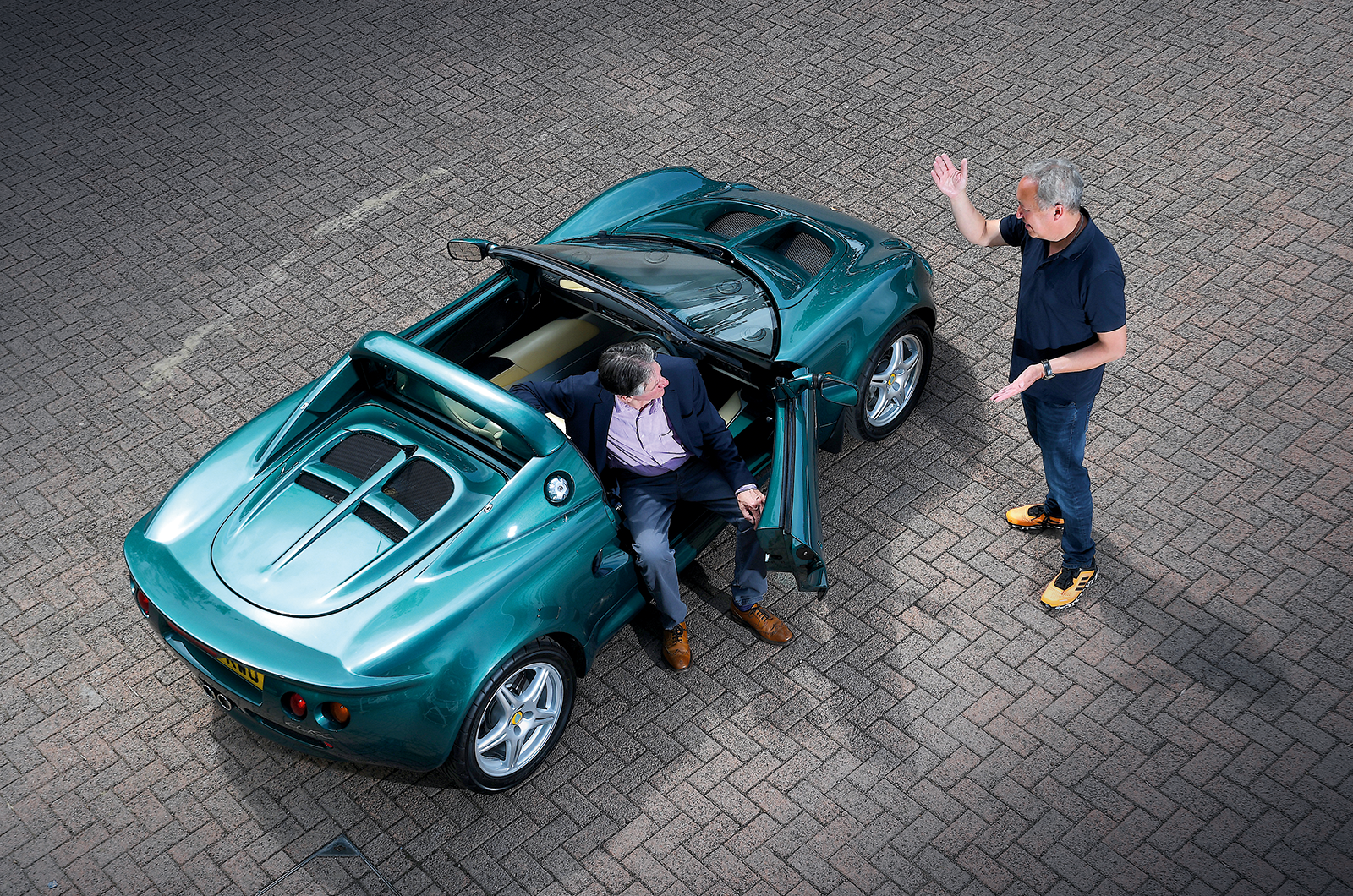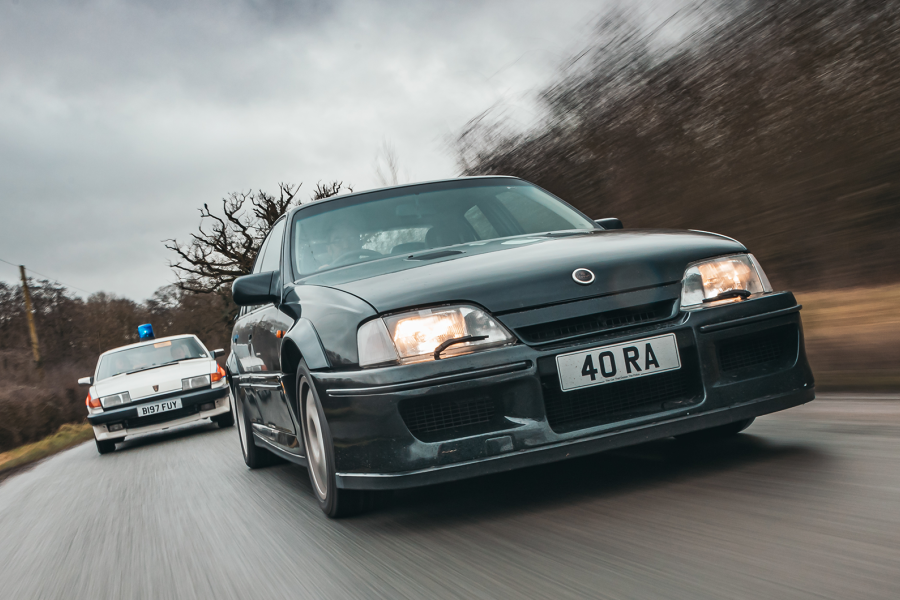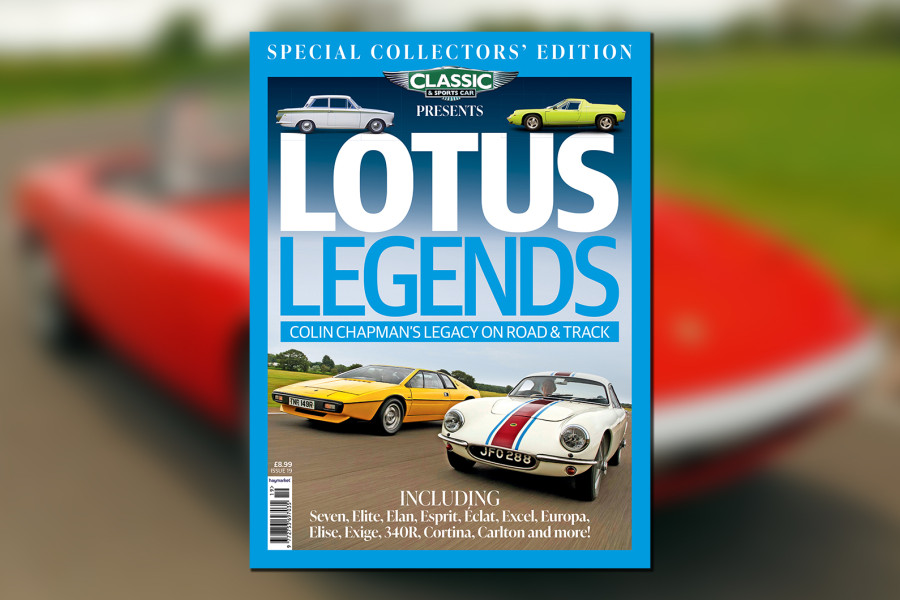RR “For me, the best thing about the design is the way the power is put into the back of the car through the intakes, it’s classic supercar stuff.
“The worst… Probably the window winder, but Julian wasn’t responsible for that!
“I also don’t like the bend in the wiper arm; it could be an elegant curve, it didn’t need to be that harsh – we have really good metalworkers here.”
JT “This windscreen is on its way to Mars on a Tesla, it’s the fastest ’screen in the world on a Hennessey, and goes underwater in the Sbarro. It’s the most famouswindscreen in the world!”
Rackham: “Of all the projects I have been involved with, the pedal extrusions of the Elise remain the one thing I am totally, completely happy with – they work on so many levels”
RR “That ’screen has as much curvature as you can get with a single wiper; it really limits what you can do.
“But it was about having what race cars have – as well as being simple, cheap and not handed for different markets.
“It’s also why the occupants sit so close together, to take advantage of the small swept area.”
The scoop adds a supercar-esque stance (left); the fuel-filler cap was inspired by Rackham’s Sunbeam motorcycle
JT “For me the body was too wide around the rear clamshell, but all engineers get wheelarch envelopes wrong – that was a. miscalculation in terms of accounting for shrinkage in the manufacturing process. And the vents at the back are fake, which always annoyed me.”
“But I do love the extrusions, the way we designed it together, and the pedals in particular. The worst thing for me is that it’s too noisy – it’s just so mechanical.”
RR “There were no NVH requirements for it at the time, though: this was a pure fun car.”
JT “Oh, and as an owner [Thomson still has an S1 Sport 160 in the garage], anything to do with getting at the battery is a pain.”
RR “But it was buried low down for weight distribution, as low as we could get it.”
Two giants of the car design world came together with brilliant results
JT “Normally in car firms as a designer you don’t get to work so closely with your opposite number in engineering, but when you do something where you have such respect for each other’s discipline, that’s how you end up with such purity.
“We always reminisce about doing something like this again but it is difficult to imagine it today. It’s unique.
“In my previous job at JLR there were 10,000 engineers, but this was just a handful of people. It was like doing a car for ourselves. If you are designing for yourself then you get the best results.”
Images: John Bradshaw/Lotus Cars
READ MORE
Elise at 25: farewell to a Lotus legend
Back to the future: why the Tesla Roadster is the first true electric classic car of the modern era
Buyer’s guide: Lotus Elise S1
Alastair Clements
Alastair is Editor in Chief of Classic & Sports Car and has been associated with the brand for more than 20 years
